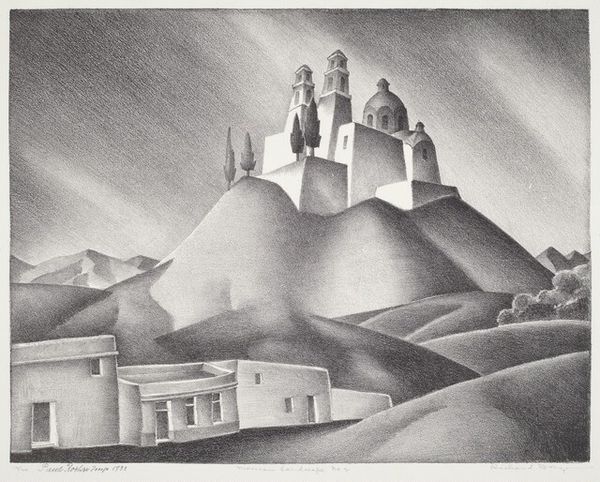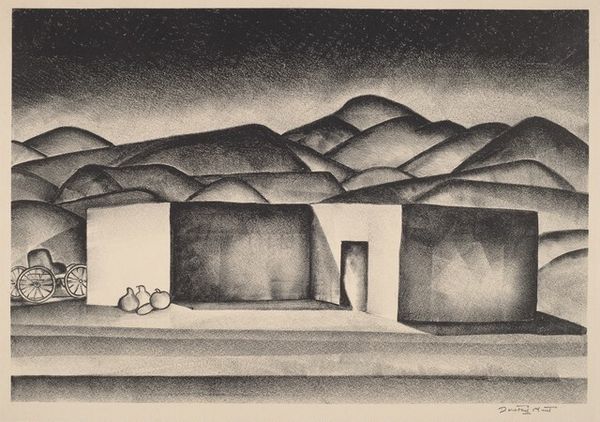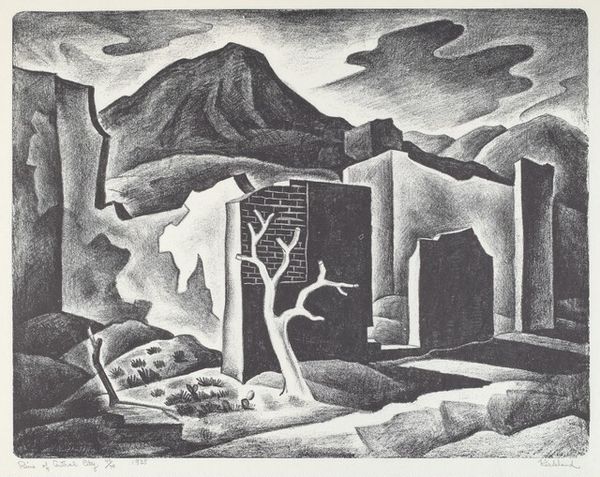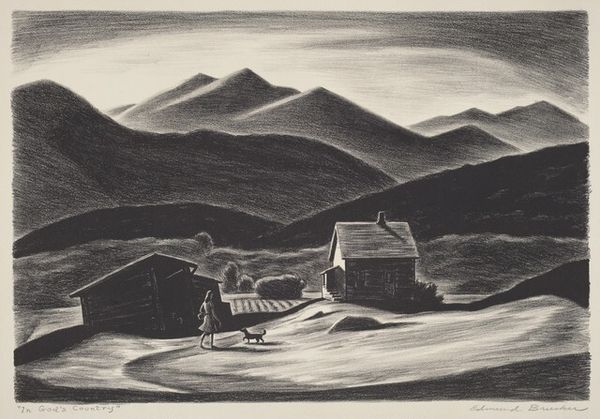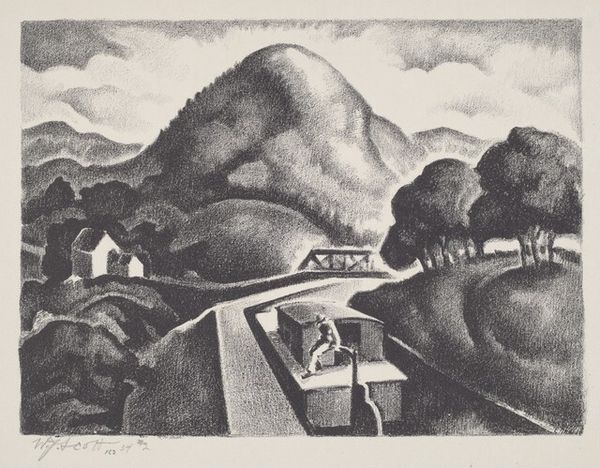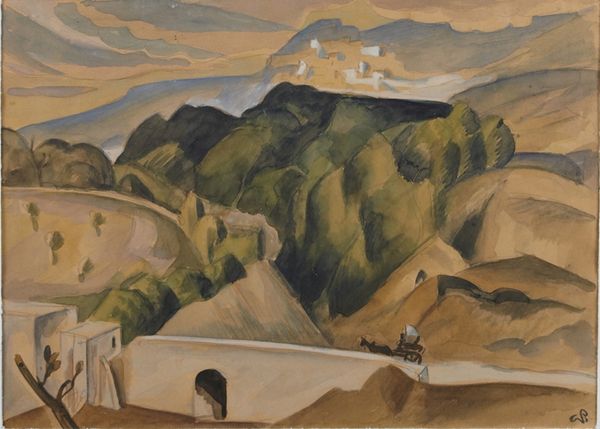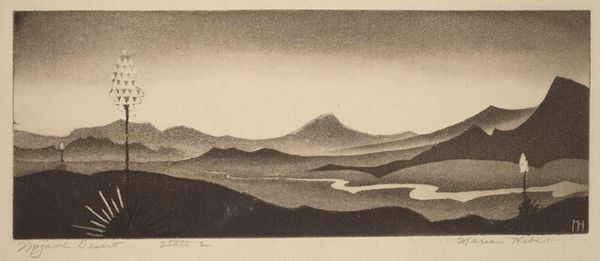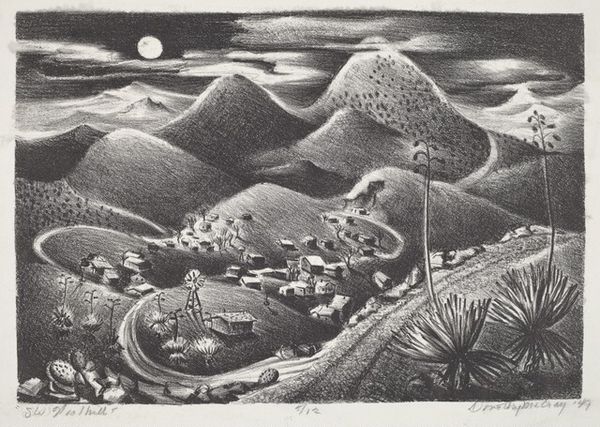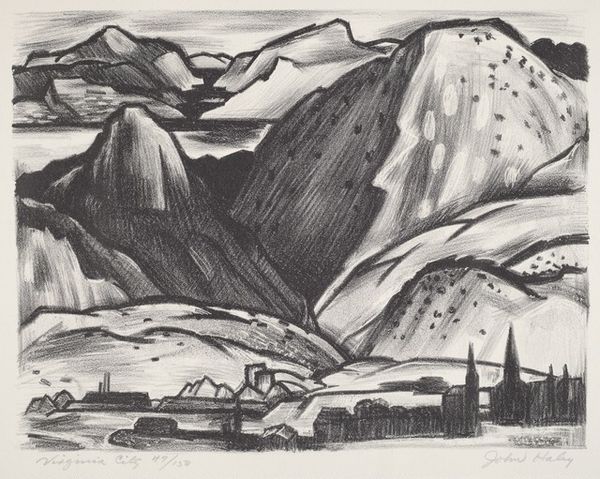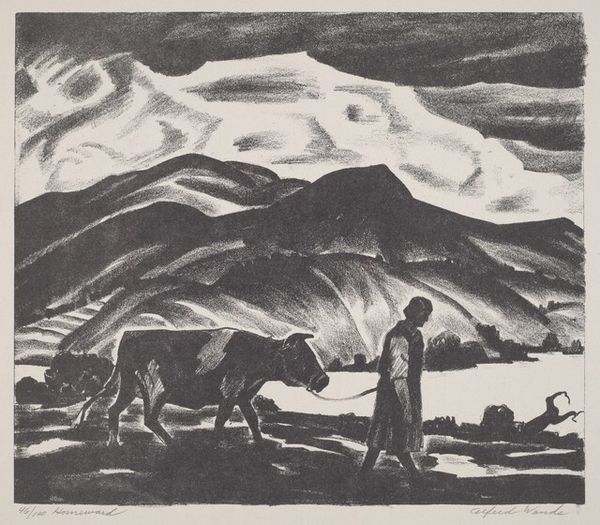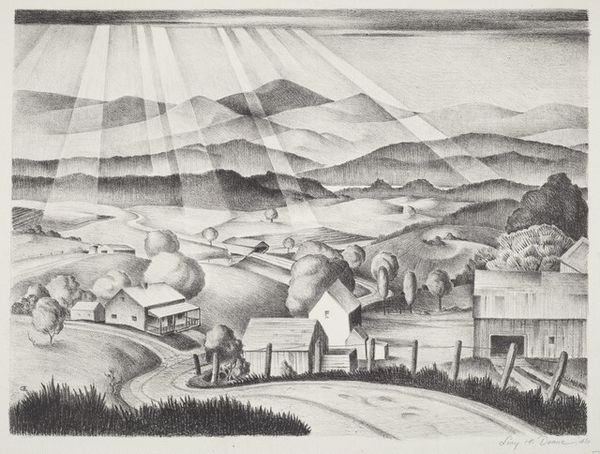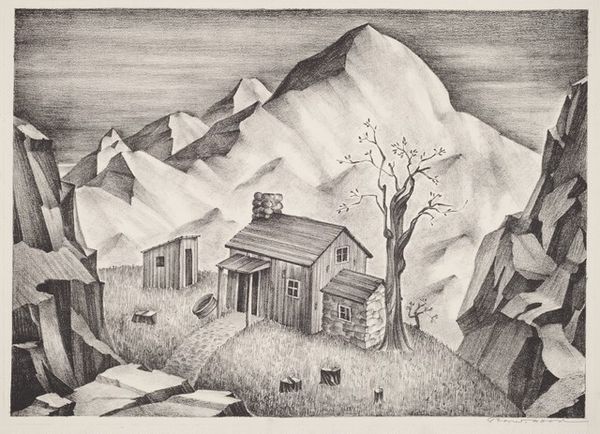
drawing, print, graphite
#
drawing
# print
#
landscape
#
pencil drawing
#
geometric
#
line
#
graphite
Dimensions: image: 305 x 442 mm sheet: 368 x 508 mm
Copyright: National Gallery of Art: CC0 1.0
Editor: Here we have Mary Dill’s “Desert Storm,” a graphite drawing from around 1936. It has such a strong sense of place, a feeling of monumental solitude. What do you see in this piece? Curator: Well, first I notice the high horizon line, dwarfed by what loom in the background. It creates a sense of compression, like being surrounded and somewhat claustrophobic even within this vast landscape. What emerges for me is not just landscape but land-as-scapegoat. Editor: Land-as-scapegoat? Curator: Think of the Depression-era context, the dust bowl, the collective hardship and anxiety projected onto the very land itself. The building feels almost fragile, a temporary claim amidst the overwhelming geological permanence of the mountains. Look how she uses geometry combined with sweeping lines to create dramatic tensions, right? This play calls upon those fears and memories, a visual embodiment of anxieties that shaped cultural consciousness. Don't you agree? Editor: I do. The building almost looks defiant against that imposing landscape now that you mention the context. The geometric starkness highlights that feeling of vulnerability. Curator: Exactly. It's fascinating how Dill distills complex emotions into these potent, seemingly simple forms. And note the way she frames that distant scene and the architectural details by almost photographic light. Editor: Thinking about it now, I definitely get a better grasp of what went into making this piece! Thank you. Curator: My pleasure, you had great instincts. Seeing through a symbolic lens brings historical context and emotional weight to any art viewing.
Comments
No comments
Be the first to comment and join the conversation on the ultimate creative platform.
